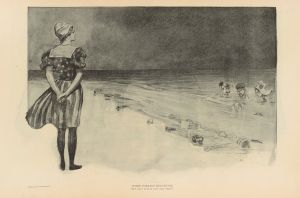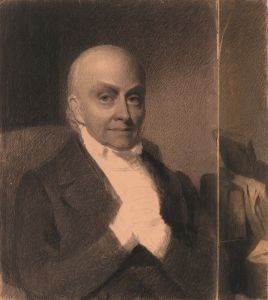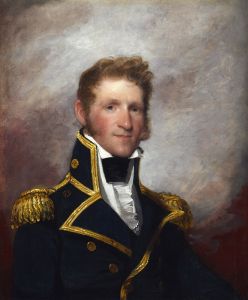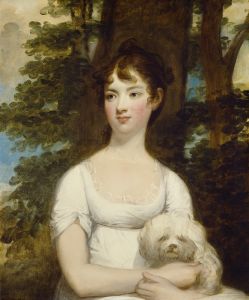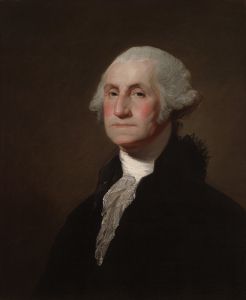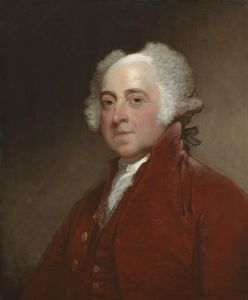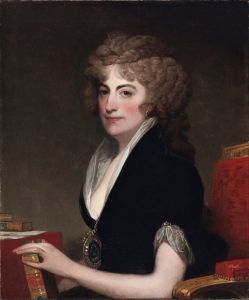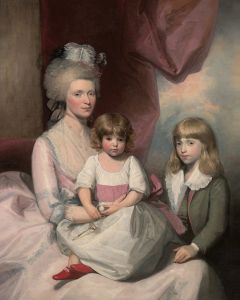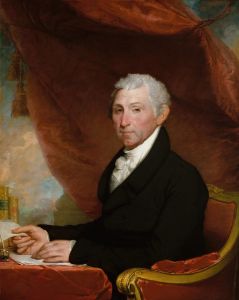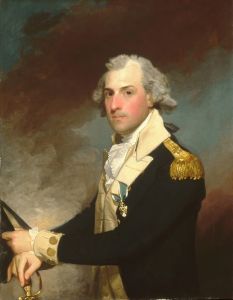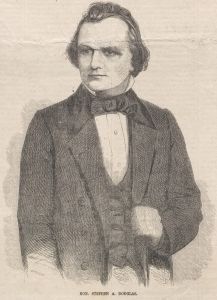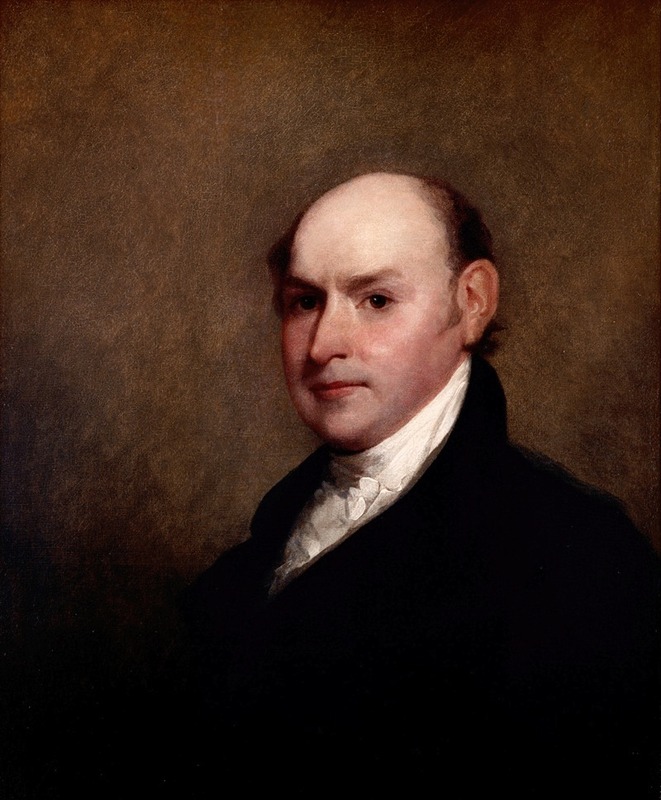
John Quincy Adams
A hand-painted replica of Gilbert Stuart’s masterpiece John Quincy Adams, meticulously crafted by professional artists to capture the true essence of the original. Each piece is created with museum-quality canvas and rare mineral pigments, carefully painted by experienced artists with delicate brushstrokes and rich, layered colors to perfectly recreate the texture of the original artwork. Unlike machine-printed reproductions, this hand-painted version brings the painting to life, infused with the artist’s emotions and skill in every stroke. Whether for personal collection or home decoration, it instantly elevates the artistic atmosphere of any space.
The portrait of John Quincy Adams by Gilbert Stuart is a notable example of early 19th-century American portraiture. John Quincy Adams, the sixth president of the United States (1825–1829), was a prominent statesman, diplomat, and lawyer. Gilbert Stuart, one of the most celebrated portrait artists in American history, is best known for his depictions of prominent political figures, including his famous unfinished portrait of George Washington.
This particular portrait of John Quincy Adams was painted during Stuart's later career. While the exact date of its creation is not definitively documented, it is believed to have been completed around the early 1820s, during or shortly before Adams's presidency. At the time, Adams was a well-known public figure, having served as a diplomat, Secretary of State, and a key negotiator of the Treaty of Ghent, which ended the War of 1812.
The painting is an oil-on-canvas work that exemplifies Stuart's skill in capturing the character and personality of his subjects. In the portrait, Adams is depicted with a composed and serious expression, reflecting his reputation as an intellectual and a dedicated public servant. Stuart's use of light and shadow, as well as his attention to detail in rendering Adams's facial features, demonstrates his mastery of the portrait genre.
This work is part of a broader tradition of presidential portraiture in the United States, which sought to document and celebrate the nation's leaders. Stuart's portraits were highly sought after during his lifetime, and his works remain significant in the study of American art and history.
The current location of this specific portrait is not universally agreed upon, as multiple versions and copies of Stuart's works exist. Some of Stuart's portraits of John Quincy Adams are housed in institutions such as the National Portrait Gallery in Washington, D.C., and other collections dedicated to preserving American historical artifacts.
Gilbert Stuart's legacy as an artist is closely tied to his ability to convey the dignity and humanity of his subjects, and his portrait of John Quincy Adams is no exception. It remains an important piece of American cultural heritage, offering insight into both the artistic practices of the time and the historical figures who shaped the early United States.





